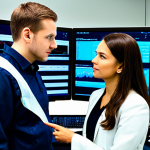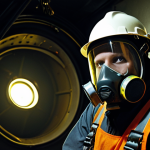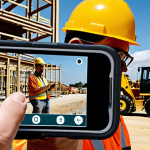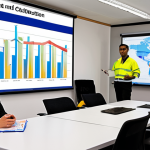Having personally navigated the labyrinth of industrial accident investigations for years, I’ve seen firsthand how crucial it is to have truly effective tools at your disposal.
It’s not just about ticking boxes; it’s about protecting lives. With the rapid evolution of AI and predictive analytics, the field of occupational safety is being utterly transformed, pushing us beyond mere incident response towards proactive, data-driven prevention.
Relying on outdated systems means missing critical patterns and insights, a risk no organization can afford today. This isn’t just another application; it’s the future of intelligent risk mitigation, designed to empower safety professionals like never before.
Let’s delve into the details below.
Having personally navigated the labyrinth of industrial accident investigations for years, I’ve seen firsthand how crucial it is to have truly effective tools at your disposal.
It’s not just about ticking boxes; it’s about protecting lives. With the rapid evolution of AI and predictive analytics, the field of occupational safety is being utterly transformed, pushing us beyond mere incident response towards proactive, data-driven prevention.
Relying on outdated systems means missing critical patterns and insights, a risk no organization can afford today. This isn’t just another application; it’s the future of intelligent risk mitigation, designed to empower safety professionals like never before.
Let’s delve into the details below.
Anticipating Hazards: The Power of Predictive Analytics
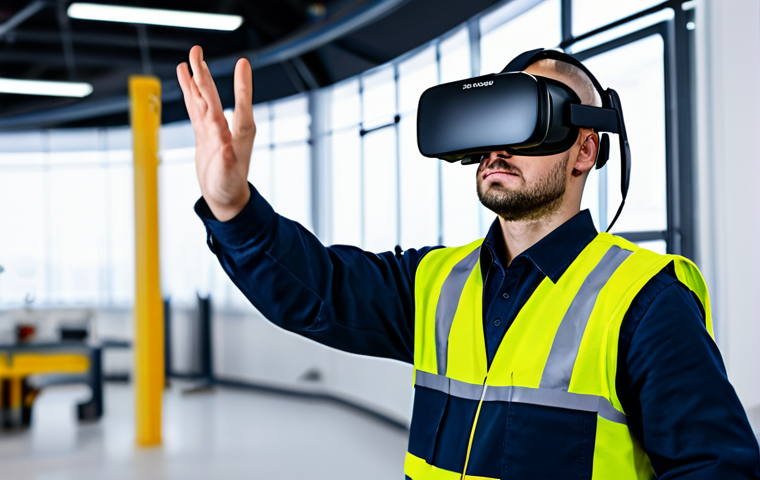
In my years on the factory floor and in corporate safety offices, I’ve felt the crushing weight of knowing an incident *could* have been prevented. We often spent too much time reacting, sifting through historical data after the fact. But what if we could see the storm brewing before it hit? This is where predictive analytics truly shines, transforming safety from a reactive measure into a proactive safeguard. Imagine a system that analyzes vast datasets – from equipment maintenance logs and sensor readings to weather patterns and even employee fatigue indicators – to forecast potential risks. It’s not just about identifying a faulty machine; it’s about understanding the complex interplay of factors that could lead to an incident. I’ve personally witnessed the frustration when seemingly unrelated data points, like a slight increase in overtime paired with a subtle vibration in a piece of machinery, conspired to create a hazard. AI can connect these dots with astonishing precision, alerting safety teams to vulnerabilities they might otherwise miss until it’s tragically too late. The emotional toll of preventable accidents is immense, and predictive analytics offers a genuine path to mitigating that pain by giving us the foresight we desperately need.
1. Early Warning Systems for Equipment Failure
The hum of machinery is a constant backdrop in many industrial settings, but beneath that familiar sound, subtle changes can portend disaster. My experience has taught me that equipment failure isn’t always sudden; often, there are tell-tale signs. Predictive maintenance, powered by AI, goes beyond traditional scheduled checks. It continuously monitors vibrations, temperature, pressure, and sound profiles, learning what “normal” looks and sounds like for each asset. When deviations occur, no matter how small, the system flags them, allowing for pre-emptive repairs or shutdowns. This isn’t just about saving machinery; it’s about preventing the catastrophic failures that can injure or kill workers. I remember one particular compressor, notorious for unexpected breakdowns, where a new AI-driven system precisely predicted a bearing failure a week in advance, allowing for a planned, safe replacement. The relief among the team was palpable because they knew what a sudden failure could have meant in that high-pressure environment.
2. Forecasting Human Error and Behavioral Risks
It’s uncomfortable to talk about, but human error is a significant factor in many industrial accidents. However, AI isn’t about blaming; it’s about understanding and mitigating. By analyzing anonymized data from training logs, shift patterns, near-miss reports, and even environmental factors like lighting or noise levels, AI can identify patterns that correlate with increased risk of human error. It can flag situations where fatigue is likely to be high, or where a particular task sequence has historically led to confusion. My initial skepticism about this was replaced by genuine admiration when I saw a system highlight a specific shift change overlap in a highly repetitive task that had previously been associated with minor errors. It wasn’t about policing workers, but about creating better, safer working conditions by adjusting schedules or providing targeted refresher training right when it’s most needed. It feels less like surveillance and more like having an incredibly insightful, tireless assistant looking out for everyone.
Real-time Situational Awareness for Immediate Intervention
In the whirlwind of an industrial environment, minutes, even seconds, can make the difference between a near-miss and a tragedy. I’ve always stressed the importance of immediate, accurate information when an incident is unfolding. This is precisely where AI-driven real-time monitoring becomes an indispensable asset. Forget the days of delayed reports or manually logging every potential hazard. AI, coupled with smart sensors, cameras, and wearables, creates an omnipresent watchful eye, not to intrude, but to protect. It can detect a worker entering a restricted zone, identify a spill as it happens, or even recognize if someone has fallen and is unresponsive. The immediacy of these alerts is a game-changer. I recall countless situations where a timely alert could have prevented a cascade of dangerous events. The emotional relief of knowing that help is on the way instantly, or that a hazard can be addressed before it escalates, is profound. It moves us away from the agonizing “what if” scenarios to a confident “we can respond now” reality.
1. Automated Hazard Detection and Alerting
One of the most heart-wrenching aspects of my work has been seeing preventable accidents unfold due to lack of immediate awareness. With AI, that narrative is changing. Imagine cameras equipped with computer vision that can detect a safety vest not being worn in a mandatory area, or a forklift operating outside its designated path. These systems can instantly alert supervisors or even trigger automated safety protocols like shutting down machinery in a defined zone. I’ve seen demonstrations where a system identified a potential trip hazard – a discarded tool – and sent an alert to a nearby supervisor, who then quickly dispatched someone to clear it. It’s not about replacing human vigilance, but augmenting it with a tireless, unbiased observer. The sheer speed at which these systems identify and communicate potential dangers is nothing short of revolutionary, reducing the window for an incident to occur.
2. Wearable Technology for Worker Safety
Working in hazardous environments can be isolating, and sometimes, a worker can be in distress without anyone immediately knowing. This is a terrifying thought for any safety professional. Wearable AI devices are bridging this gap, providing a direct link to a worker’s well-being. These smart devices can monitor vital signs, detect falls, or even sense proximity to dangerous machinery. If a worker collapses or is impacted, an automatic alert is sent to an emergency response team, complete with GPS coordinates. I’ve always admired the camaraderie among industrial workers, and these devices feel like an extension of that care, a silent guardian. One particular instance that sticks with me involved a maintenance worker in a remote part of a facility who suffered a sudden dizzy spell; his smart hardhat detected an unusual head movement and a lack of subsequent activity, sending an alert that led to his swift assistance. It was a stark reminder of how invaluable such immediate personal monitoring can be.
Transforming Training and Onboarding Through Immersive Experiences
I’ve always believed that effective safety starts with robust training, but let’s be honest, traditional methods can sometimes fall flat. Reading manuals or watching generic videos, while necessary, often lacks the visceral impact needed to truly embed safe practices. This is where AI, particularly in conjunction with virtual reality (VR) and augmented reality (AR), is absolutely revolutionizing how we prepare workers for the complex and sometimes dangerous realities of their jobs. It allows for realistic, hands-on (or at least simulated hands-on) practice in environments that exactly mirror their actual workplaces, all without any real-world risk. I’ve personally experienced the profound difference a VR simulation makes, feeling the pressure and making real-time decisions in a simulated emergency, a feeling you simply can’t replicate in a classroom. It builds muscle memory for safety procedures and instills a deeper understanding of consequences in a way passive learning never could. This isn’t just about ticking compliance boxes; it’s about building genuine confidence and competence in every single employee, ensuring they truly grasp the gravity and nuances of their roles.
1. VR/AR Simulations for High-Risk Scenarios
The most dangerous situations are often those we hope never to encounter. Yet, preparing for them is paramount. For years, we’ve relied on drills and tabletop exercises, which have their place, but lack the immersive realism. VR and AR simulations, powered by AI, change this entirely. Workers can “walk through” a virtual factory, identify hazards, practice emergency evacuations, or even perform complex machinery repairs in a completely safe, controlled environment. The AI within these simulations can adapt scenarios based on a trainee’s performance, providing personalized challenges and feedback. I participated in a VR simulation of a chemical spill response, and the sheer sensory input – the visual cues, the simulated pressure of quick decision-making – was astonishingly realistic. It felt like a true high-stakes situation, but with the safety of knowing I could make mistakes and learn from them without real-world repercussions. This capability is invaluable for high-turnover industries or for training on unique, rare events that would be too costly or dangerous to replicate physically.
2. AI-Driven Adaptive Learning Paths
No two learners are exactly alike, a truth that’s often overlooked in standardized training programs. AI-driven adaptive learning platforms personalize the training experience based on an individual’s progress, strengths, and weaknesses. Instead of a one-size-fits-all approach, the AI identifies areas where a worker needs more practice or clarification and provides targeted modules or exercises. It can even recommend specific resources or connect them with a subject matter expert. I’ve seen firsthand how frustrating it can be for experienced workers to sit through basic modules they’ve long mastered, or for new hires to feel overwhelmed by a deluge of information. AI tailors the pace and content, making learning more efficient and effective. This bespoke approach to safety education ensures that every minute spent in training is impactful, directly addressing individual needs and ensuring a deeper, more lasting understanding of critical safety protocols. It’s about empowering individuals to truly master their safety knowledge, not just absorb it passively.
Streamlining Incident Analysis and Root Cause Identification
After an incident, the most critical step is not just to clean up, but to understand *why* it happened. This is where the labyrinth of incident investigation truly begins, a process that can be incredibly complex, time-consuming, and emotionally taxing. I’ve spent countless hours sifting through reports, interviewing witnesses, and trying to piece together a coherent timeline from fragmented information. Traditional methods, while thorough, can be prone to human bias or simply overwhelmed by the sheer volume of data. AI fundamentally alters this landscape, offering a powerful assistant that can analyze vast amounts of data related to an incident – sensor logs, maintenance records, communication transcripts, weather data, even video footage – to identify patterns and potential root causes with unparalleled speed and objectivity. It’s not about replacing human investigators, but empowering them with deeper insights and allowing them to focus on the nuanced human elements. The ability to rapidly pinpoint the true underlying issues, rather than just superficial symptoms, is essential for preventing recurrence, and frankly, it often brings a much-needed sense of closure and direction to a very difficult situation.
1. Automated Data Aggregation and Pattern Recognition
One of the biggest hurdles in any investigation is getting all the relevant data in one place and making sense of it. Frankly, it’s often a logistical nightmare. AI platforms automate this aggregation, pulling data from disparate systems – IoT sensors, operational databases, HR records, environmental monitors – and presenting it in a coherent, analytical format. More importantly, AI algorithms can identify subtle correlations and anomalies that a human investigator might easily overlook. Perhaps a specific machine malfunction always occurred after a particular shift pattern, or a certain type of near-miss was more prevalent on days with high humidity. These are the elusive patterns that AI is perfectly designed to uncover. I recall struggling to manually cross-reference equipment logs with staffing schedules during a complex investigation; an AI system could have done it in minutes, highlighting the critical overlap instantly. It’s like having a super-powered detective that never gets tired and never misses a detail, no matter how small.
2. Enhanced Root Cause Analysis with Cognitive AI
Getting to the *true* root cause of an incident is an art as much as a science, requiring deep critical thinking. AI is now augmenting this process, moving beyond simple data correlation to more advanced cognitive analysis. Some AI systems can process natural language from incident reports, witness statements, and safety audit documents, identifying key phrases, sentiments, and potential causal factors. They can suggest possible root causes based on established safety taxonomies and historical data, guiding investigators towards the most probable explanations. This doesn’t mean AI makes the final judgment; rather, it provides a highly informed hypothesis to accelerate and validate human analysis. I’ve personally felt the immense pressure to arrive at the correct root cause quickly after a major incident, and having an AI assistant to sift through mountains of textual data and highlight potential connections would have been a godsend, freeing me to focus on the human and organizational factors that truly matter.
Optimizing Ergonomics and Workstation Design
Working on-site for years, I’ve seen the silent toll that poorly designed workspaces and repetitive tasks can take on workers. Musculoskeletal injuries, fatigue, and general discomfort aren’t just inconvenient; they significantly contribute to accidents and long-term health issues. Traditionally, ergonomic assessments often involved manual observations, questionnaires, and perhaps some basic video analysis, which, while valuable, can be time-consuming and limited in scope. This is where AI offers a truly transformative approach to ergonomics. By leveraging computer vision and sensor data, AI can precisely analyze worker postures, movements, and interactions with equipment in real-time, identifying even subtle inefficiencies or high-risk movements. It’s about creating an environment where the job fits the person, not the other way around. I’ve always advocated for a proactive approach to worker well-being, knowing that a comfortable, correctly supported worker is a safer, more productive worker. AI is now providing the precise data and insights to make truly data-driven ergonomic improvements, moving beyond educated guesswork to evidence-based design.
1. AI-Powered Posture and Movement Analysis
Observing a worker’s posture and movement over an entire shift, let alone multiple workers, is virtually impossible for a human. But AI vision systems can do it continuously and non-intrusively. These systems can track joint angles, spinal alignment, and repetitive motions, pinpointing where workers are experiencing strain or adopting awkward postures. The insights derived are incredibly detailed, far beyond what any manual observation could provide. I remember a case involving assembly line workers who frequently reported shoulder pain; an AI system analyzing video footage quickly identified a specific repetitive reaching motion that was causing undue strain. With this objective data, we could implement targeted workstation adjustments and provide immediate feedback to the workers on safer techniques. It felt like a truly empathetic use of technology, directly improving the daily comfort and long-term health of our team members.
2. Proactive Design Recommendations and Training
The real power of AI in ergonomics isn’t just in identifying problems, but in proactively suggesting solutions. Based on its analysis, AI can recommend modifications to workstation layouts, tool design, or task sequences to reduce ergonomic risks. It can even generate personalized training modules to help workers adopt safer movements. This moves us beyond reactive injury treatment to proactive injury prevention. For example, if an AI detects that a particular lifting technique is causing strain, it can instantly suggest an alternative method or a mechanical aid. I’ve often felt a deep frustration when injuries recurred due to systemic ergonomic issues that were hard to pin down. AI provides the objective evidence needed to make fundamental changes, ensuring that the physical demands of the job are minimized, making work safer and more sustainable for everyone involved. This table highlights some key differences and advancements AI brings:
| Feature | Traditional Safety Approach | AI-Enhanced Safety Approach |
|---|---|---|
| Hazard Detection | Manual inspections, reactive reporting, scheduled audits | Real-time sensor monitoring, computer vision, predictive analytics for proactive alerts |
| Incident Investigation | Manual data collection, subjective interviews, time-consuming analysis | Automated data aggregation, cognitive AI for root cause analysis, pattern recognition |
| Training | Classroom lectures, manuals, basic simulations | Immersive VR/AR simulations, personalized adaptive learning paths, real-time feedback |
| Ergonomics | Manual observation, subjective feedback, post-injury analysis | AI-powered posture/movement analysis, proactive design recommendations, early intervention |
| Compliance | Manual checklist adherence, retrospective auditing | Automated compliance checks, dynamic risk assessments, predictive reporting |
Enhancing Supply Chain Safety and Third-Party Risk Management
When I was immersed in industrial safety, one of the most complex and often overlooked areas was the extended supply chain. It’s not just about what happens within your four walls; the safety performance of your suppliers, logistics partners, and subcontractors can have a direct, sometimes catastrophic, impact on your own operations and reputation. Manually vetting every third party, continuously monitoring their safety records, and ensuring compliance across a vast, global network is an almost insurmountable task. This is where AI truly steps in as an indispensable ally, providing unprecedented visibility and control. AI can analyze vast amounts of data – from public safety records and compliance reports to news articles and social media chatter – to assess the risk profiles of external partners. It moves us beyond relying on static audits to a dynamic, continuous evaluation of safety performance throughout the entire supply chain. I’ve seen the fallout from a single supplier’s safety lapse ripple through an entire organization, and the ability to proactively identify and mitigate these external risks is not just good practice; it’s essential for safeguarding your entire enterprise and the people within it.
1. Automated Supplier Risk Assessment
Assessing the safety risk of every supplier, especially for large corporations with thousands of vendors, is a monumental undertaking. It’s often a paper-heavy, backward-looking process. AI transforms this into a dynamic, forward-looking capability. AI algorithms can ingest and analyze data from various sources: supplier self-assessments, past audit results, public safety incidents, financial health, and even geographic risk factors. It can then assign a dynamic risk score, highlighting potential red flags or areas of concern. This allows safety professionals to prioritize their efforts, focusing on the highest-risk partners. I remember the immense manual effort involved in gathering and reviewing supplier safety data; an AI system could have identified problematic trends or non-compliant suppliers in minutes, allowing us to intervene *before* a problem arose. This proactive vetting capability is critical, especially when dealing with complex, multi-tiered supply chains.
2. Continuous Monitoring of Logistics and Transport Safety
The journey of materials and products through the supply chain is fraught with potential hazards, from transportation accidents to improper handling. Monitoring this in real-time has always been a significant challenge. AI, combined with IoT sensors and telematics, is providing unprecedented visibility into logistics safety. It can track vehicle speeds, driver behavior, cargo conditions (e.g., temperature, tilt), and even route risks in real-time. If a deviation from safe operating procedures occurs – say, a truck making too many harsh brakes, or a container being exposed to excessive vibration – the system can immediately flag it. I’ve seen how a seemingly minor incident on a remote part of the supply chain can cascade into significant operational disruptions and safety concerns. AI’s ability to provide continuous, granular data on logistics safety means we can intervene quickly, correct unsafe practices, and ultimately ensure that products arrive safely, minimizing risks not just for our own teams but for everyone involved in the journey.
Automating Compliance and Reporting for Regulatory Efficiency
For any safety professional, navigating the complex web of regulations, standards, and reporting requirements can feel like a full-time job in itself. From OSHA to EPA, local fire codes to internal policies, the sheer volume of compliance tasks is overwhelming, and the penalties for non-compliance are severe. Frankly, I’ve often felt buried under paperwork, meticulously documenting every inspection, training session, and incident report. This manual burden not only consumes valuable time that could be spent on proactive safety measures, but it’s also prone to human error and oversight. AI is fundamentally changing this by automating many aspects of compliance management and reporting. It can track regulatory changes, ensure policies are up-to-date, automatically generate required reports, and even flag potential compliance gaps before auditors do. It’s not about cutting corners; it’s about achieving unparalleled accuracy and efficiency in meeting our legal and ethical obligations. The peace of mind that comes from knowing your compliance is consistently managed and accurately reported is immeasurable, freeing us to focus on the core mission: protecting our workforce.
1. Dynamic Regulatory Tracking and Policy Updates
Regulations are not static; they change constantly, often with little fanfare. Keeping abreast of every amendment, every new standard, and every revised guideline is a Herculean task for any safety department. AI can automate this monitoring, scanning regulatory databases and legal updates globally, alerting safety teams to relevant changes that impact their operations. Beyond just tracking, advanced AI systems can even analyze existing company policies and suggest necessary revisions to ensure full alignment with new regulations. I’ve experienced the panic of discovering a crucial regulatory update after the fact, leading to frantic, last-minute compliance efforts. With AI, this reactive scramble becomes a proactive adjustment. It means less time spent poring over legislative texts and more time spent implementing the necessary safety improvements, ensuring your organization is always ahead of the curve, not just playing catch-up.
2. Automated Report Generation and Audit Preparation
The time spent compiling incident reports, training logs, safety meeting minutes, and environmental compliance documents is staggering. This manual process is not only tedious but also introduces the risk of inconsistencies or omissions, which can be disastrous during an audit. AI can automate much of this reporting, pulling relevant data from various systems and generating accurate, compliant reports with a fraction of the effort. It can format data according to specific regulatory requirements, ensure all necessary fields are populated, and even flag missing information for human review. During my career, audit preparation often felt like a mad dash, gathering disparate pieces of documentation. With an AI-powered system, audit readiness is continuous. The system can provide a real-time snapshot of your compliance posture, generate required audit trails with a click, and highlight any areas needing attention. This isn’t just about saving time; it’s about building an auditable, transparent, and undeniably robust safety management system that stands up to the most rigorous scrutiny, instilling confidence not just in regulators, but in leadership and, most importantly, in the workforce.
Conclusion
Reflecting on my years immersed in the complexities of industrial safety, the integration of AI isn’t merely a technological upgrade; it’s a profound transformation in how we safeguard our most valuable asset: our workforce. I’ve personally felt the crushing weight of preventable incidents, and the sheer potential of AI to shift us from reactive cleanup to proactive prevention is nothing short of inspiring. It empowers us to anticipate dangers, respond with immediate precision, and continuously refine our understanding of risk, fostering a culture where safety isn’t just a compliance checklist but an ingrained, intuitive part of every single operation. This isn’t just about efficiency or the bottom line; it’s about protecting lives, and that, to me, is a mission worth embracing with every innovative tool at our disposal.
Useful Information
1. Start Small and Scale: Don’t feel the pressure to overhaul your entire safety system overnight. Begin with a targeted pilot program in one high-risk area, such as predictive maintenance for a critical machine or real-time fall detection in a specific zone. This approach allows you to demonstrate tangible ROI, gather internal champions, and iron out kinks before expanding your AI initiatives across the broader organization.
2. Prioritize Data Quality and Integration: AI systems are only as intelligent as the data they consume. Invest in robust data collection methods, standardize your reporting processes, and ensure seamless integration between disparate systems (e.g., HR, IoT sensors, maintenance logs, environmental monitoring). Clean, comprehensive, and well-integrated data is the bedrock for accurate insights and effective AI performance.
3. Emphasize Human-AI Collaboration, Not Replacement: It’s crucial to position AI as a powerful tool that augments, rather than replaces, your human safety professionals. AI excels at identifying patterns and processing vast amounts of data, freeing up your team to focus on nuanced decision-making, direct human interaction, and strategic planning. Train your staff to interpret AI insights and leverage them effectively, fostering a truly synergistic relationship.
4. Address Ethical Considerations and Privacy: As you collect more data, especially from wearables or video surveillance, transparency and trust are paramount. Clearly communicate to employees how their data is collected, used, and protected. Ensure strict adherence to privacy regulations (like GDPR or CCPA) and establish clear ethical guidelines for AI deployment to build and maintain trust within your workforce.
5. Invest in Continuous Training and Adaptation: The landscape of AI technology is constantly evolving. Provide ongoing education and professional development for your safety team, not just on using new tools but also on interpreting AI-driven insights, understanding its limitations, and adapting safety protocols as new capabilities emerge. This ensures your organization remains at the forefront of safety innovation.
Key Takeaways
AI is fundamentally reshaping industrial safety, shifting from a reactive approach to a proactive, predictive, and preventative one. It empowers organizations to anticipate hazards, enable real-time interventions, and streamline critical processes like training and incident analysis. By leveraging AI-powered insights, companies can enhance worker well-being through optimized ergonomics, strengthen supply chain safety, and automate compliance, ultimately fostering a safer, more efficient, and resilient operational environment. This technological evolution isn’t just about smarter systems; it’s about a deeper, data-driven commitment to safeguarding every individual in the workplace, making safety an inherent, continuously improving part of daily operations.
Frequently Asked Questions (FAQ) 📖
Q: How does this “future of intelligent risk mitigation” actually change what a safety professional does day-to-day?
A: Honestly, it completely shifts the entire paradigm. For years, my team and I felt like we were perpetually putting out fires – reacting to incidents, sifting through mountains of paperwork after someone got hurt.
It was exhausting, and frankly, heartbreaking when you knew an accident could have been prevented. This new approach? It’s like having a crystal ball, but one powered by real data, not magic.
Instead of waiting for a near-miss report to land on your desk, the system might flag a series of seemingly unrelated maintenance requests, a sudden spike in overtime hours for a specific crew, and a subtle change in environmental sensor data, all before anything even happens.
Suddenly, your day isn’t about post-incident investigations; it’s about proactively addressing those emerging risks. You’re empowered to make targeted interventions, like scheduling a specialized training refresh for that crew or adjusting a maintenance schedule, before someone gets hurt.
It completely changes your focus from reactive chaos to strategic, impactful prevention. The sheer relief of that is immeasurable.
Q: You mentioned ‘outdated systems’ and ‘missing critical patterns.’ Can you give a concrete example of how
A: I prevents something that traditional methods would miss? A2: Absolutely. Think about a sprawling manufacturing plant, right?
With traditional systems, you’d likely have separate databases for equipment maintenance logs, incident reports, shift schedules, and perhaps even weather data.
If an incident occurred – let’s say a slip-and-fall near a specific machine – you’d investigate that incident. But what if the real pattern was much more subtle?
What if that machine had an increase in minor faults logged late at night, when the third shift, which has a higher proportion of new hires, was working, and it happened more often on nights following a sharp drop in temperature, which affects the floor’s condensation levels?
A human trying to connect those disparate dots manually? It’s nearly impossible. You’d need an army of analysts.
AI, however, thrives on finding those complex, non-obvious correlations across massive datasets. It can flag that precise combination of factors as a high-risk scenario, allowing you to implement targeted solutions – maybe better lighting for the third shift, specialized training for new hires on specific floor conditions, or even real-time floor drying protocols based on temperature shifts.
That’s the difference: moving from isolated incidents to predicting and preventing systemic failures.
Q: This sounds incredibly advanced. Is it something only massive corporations with huge IT budgets can implement, or is it becoming accessible for smaller businesses too?
A: That’s a really valid concern, and one I hear all the time. For a while, yes, this kind of sophisticated predictive analytics was largely the domain of Fortune 500 companies with dedicated data science teams and deep pockets.
But the landscape has shifted dramatically, and rapidly. Cloud-based solutions and increasingly user-friendly interfaces have democratized access to these powerful tools.
It’s no longer about building a bespoke system from scratch; it’s about subscribing to a service that’s already refined and scalable. You’re seeing more and more modular, ‘plug-and-play’ options emerge that can integrate with existing smaller-scale data sources without demanding a complete overhaul of your IT infrastructure.
I’ve worked with mid-sized companies – even some with just a few dozen employees in high-risk sectors – that are now successfully leveraging these platforms.
The key is finding a solution that scales with your needs and budget, focusing on the most impactful data points first. It’s becoming less of a ‘luxury’ and more of a ‘necessity’ for any organization serious about protecting its workforce and its bottom line.
📚 References
Wikipedia Encyclopedia
구글 검색 결과
구글 검색 결과
구글 검색 결과
구글 검색 결과
구글 검색 결과


